Real estate investing can be a daunting topic for beginners. The goal of this guide is to help answer key questions that many beginners have. We also explain some of the most popular real estate investment strategies,together with tips and advice for overcoming obstacles that could prevent you from taking the first step.
Table of Contents
3 Important Questions To Ask
1. Why Invest In Real Estate?
Investing in Property Can Make You A Millionaire: Simply put, no other asset class has produced more millionaires than real estate. “In the last two centuries, up to 90% of the world’s millionaires created their wealth through real estate investing, and today, the real estate industry remains the largest asset class in the world” (Kirill Bensenoff, Achieving Wealth Through Real Estate).
The Power of Leverage: When purchasing a property, it is common to raise between 10 and 20% of the property’s price as a down payment. So instead of paying full price for the asset, you can invest as little as 10%, while taking full ownership of the home. If the property then appreciates in value, the increase in equity is based on the full value of the property rather than the 10% down payment that you initially invested.
Land Is Limited & The Population Is Expanding: The human population continues to expand, while the amount of inhabitable land is steadily decreasing. This means the scarcity of real estate is increasing. In the long run, this will more than likely lead to consistent appreciation, especially in areas with good schools and economic opportunities.
Rental Income Increases While Your Mortgage Payment Is Constant: This is particularly relevant to investors who opt for the rental property route. With each passing year, it is realistic to increase the rent of an investment property by 2-8%, depending on the area and levels of demand.
So, while your mortgage repayment remains constant, the monthly cash flow generated by the property can increase with each passing year. This leads to steadily improving ROI over time, which can help you fund additional investments or cover an ever-growing percentage of your living expenses.
These are just some of the many benefits that you can unlock through real estate investing. Now let’s move on to another important question for beginners.
2. How much money do you need to get started?
The truth is that you do need some starting capital in order to get started with real estate investing. Despite the many gurus who are quick to point out that you can use “other people’s money” to fund your real estate projects, what they’re really saying is that you can apply for a loan with a bank or a reputable lender. It sounds a lot less enticing when stated openly and honestly.
When you apply for a loan, there are very real financial obligations that you are legally entitled to fulfill. The idea here is not to put you off real estate investing. Instead, the intention is to dispel the myth you can invest in real estate with other people’s money, without having the financial means to pay them back. Gurus deliberately leave out the repayment component of the equation, because their primary goal is to suck you into an expensive (and unnecessary) training program.
The general rule of thumb is that you can afford a loan that is between 2 and 2.5 times bigger than your gross income (how much you earn in a year before taxes). Alternatively, you can work out your maximum monthly repayment by multiplying your gross income by 28% and then dividing that number by 12. The tables below should help clarify how much you can afford to spend on a house.
Maximum Loan Amount Example
Maximum Loan Amount = Annual Gross Income * 2.5
- Annual Gross Income = $60,000
- Maximum Loan Amount = $60,000 * 2.5
- Maximum Loan Amount = $150,000
Maximum Monthly Repayment Example
Max Repayment = (Annual Gross Income * 28%)/12
- Annual Gross Income: $60,000
- Max Repayment = $60,000 * 0.28)/12
- Max Repayment = $1400
Please note – These are just general guidelines. Your individual loan amounts may vary.
In addition to being able to afford the mortgage repayment, it is also very helpful to save for a down payment. This can help you secure the property purchase, improve the loan terms, and decrease your monthly repayments.
For instance, if your intention is to purchase a fix and flip property or a rental property, 20% of the purchase price is a common goal to aim for. This will open doors with banks and hard money lenders alike.
Ultimately, you need to be able to afford the monthly repayment, and it is in your best interest to save up enough money to make a sizable down payment (10% or more of the property price). Provided you have enough funds to fulfill both of these obligations, it is realistic for you to start investing in property.
3. Do you have to start a business?
Strictly speaking, it isn’t necessary to start a business, but there are major benefits if you do.
Of all the benefits when opting to start a real estate business, reducing your tax burden is probably the most important because it has a direct impact on the profitability of your property investments.
For example, if you decide to fix and flip a property, almost all of the expenses involved in the process are tax-deductible. This includes loan repayments, repair costs, property tax, and even utility payments. Instead of paying for these expenses with after-tax income (your only choice if you choose not to start a business), you can treat all of them as tax-deductible expenses. The end result is that starting a real estate business can dramatically improve the profitability of whichever real estate strategy you choose.
Another major benefit of starting a real estate business is a major reduction in personal liability. If you manage your investment properties in a personal capacity and things take a turn for the worse, you can become liable for any debts owed. This could mean selling your personal assets and possessions in order to pay back the debt.
Conversely, with a business, you can use legal structures to protect your personal assets, creating a clear separation between what you own in a personal capacity, and the properties that are owned by your business.
Lastly, starting a property investment business is less daunting than you might think. For most individual investors, starting an LLC is the most tax-efficient and the simplest way to get started, but you can read more about the best business entity for real estate investors here.
If you’re serious about becoming a real estate investor, it makes sense to set up the businesses before you take ownership of your first investment property. Starting a real estate business can save you a huge amount of hassle down the road, increase the profitability of your investments, and eliminate the risk of losing your personal assets.
Common Real Estate Investment Strategies
Now that we have covered some of the benefits of real estate investing and the importance of setting up a business to improve profitability, it’s time to uncover some of the most popular real estate investment strategies.
1. Buy and hold
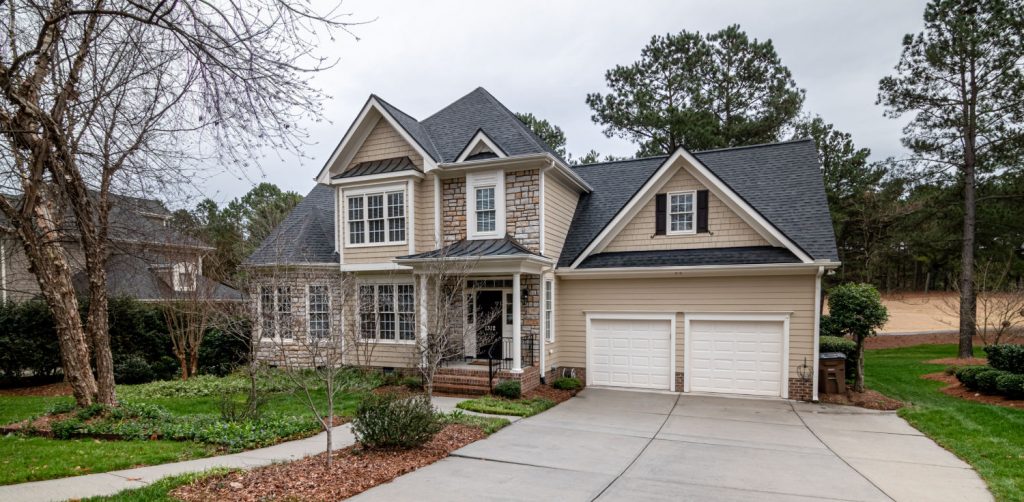
This is arguably the most tried and trusted form of real estate investing. With the buy and hold strategy, your objective is to purchase an investment property and rent it out for an extended period of time. It can be done with single-family houses, apartments, mobile homes and even commercial buildings.
There are three key elements at play when adopting this method of investment.
A) Cash Flow – For a rental property to be cashflow positive, the rental income needs to cover all the property expenses, and still leave a surplus amount that can be treated as profit. When a property achieves this status, it can be classified as a passive income machine that is likely to produce a steadily increasing rental yield with each passing year.
B) Property Appreciation – The underlying benefit of the buy and hold strategy is that the property will more than likely increase in value over time. Over a number of years, this can lead to significant equity gains that you can capitalize on when you sell. Alternatively, you can apply for a cash-out refinance loan based on the increased value of the property. This type of loan allows you to tap into the equity that the property has accumulated, without selling the property.
C) Your Mortgage Repayment Remains Constant – Assuming you implement a standard 30-year loan, the capital owed against the loan will decrease with each and every payment that you make. In addition, when you consider the impact of inflation, the relative cost of the mortgage repayment becomes cheaper with each passing year.
To put it another way, a $1000 monthly repayment today is more expensive than a $1000 monthly repayment 10 years from now, provided there is currency inflation over that time period. In essence, this means your mortgage payment will become more affordable, while the rental income increases annually.
Pros of buy and hold strategy:
- The capital amount owed on the loan decreases over time
- Rent amount increases over time
- You can generate passive income in perpetuity
- Rental income is taxed at a lower rate than standard income tax
- The property value is likely to increase over time
- You can build significant amounts of equity with this method
Cons of buy and hold strategy:
- It can take a long time to build extensive wealth with this strategy
- Properties can depreciate in value when the market takes a turn for the worse
- You will experience periods without tenants
- You need capital in order to get started
2. House Flipping
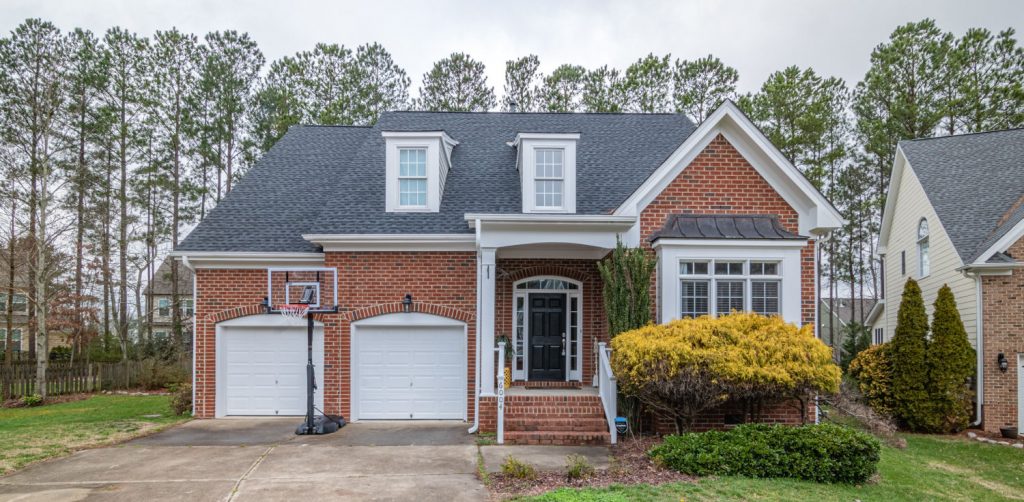
The idea behind house flipping is relatively simple. The goal of the investor is to buy a run-down property, complete renovations that will increase the value of the property, and then sell it for a healthy profit. The whole process can be broken down into 5 broad steps:
- Identify an undervalued property
- Calculate the expected After Repair Value of the property
- If a positive ROI can be achieved, source funding from a bank or hard money lender
- Complete the renovations on schedule
- Sell the property before your loan expires
It’s important to elaborate on point 5, because a large percentage of investors who choose this route will rely on a hard money loan. Hard money loans have much shorter terms than standard loans (usually 24 months or less). At the end of the loan, the expectation is that the investor will pay back the full loan amount to the hard money lender.
Generally, this isn’t a problem if the property has been sold. Assuming the renovations were successful, the property should be worth more than it was originally, and paying the full amount of the hard money loan becomes a matter of administration.
However, if you fail to sell the property on time, it can be used as collateral by the lender to recoup their funds. This would usually involve a foreclosure procedure, where the property is reclaimed by the lender and then sold as quickly as possible. This is something that you should try to avoid at all costs.
Despite the risk of defaulting on a hard money loan, the benefits of property flipping are sizable. For instance, in each quarter of 2019, the average profit on property flips in America ranged from 38-42%. This is significantly higher than the average returns on the S&P 500, which averaged 18.54% in 2019. On a $200,000 property, this would translate to a return on investment of approximately $80,000, which is more than the average annual salary in the United States (estimated at $48,672 per year).
All in all, flipping properties presents the biggest risks and the biggest rewards for most property investors. If you have access to capital, strong renovation abilities, and decent project management skills, it can be an extremely powerful wealth-building tool.
Pros of house flipping:
- The average house flipping ROI was between 38-42% in the US in 2019
- You can build wealth very quickly with this strategy
- If you have renovation and repair experience, you can save money by completing repair work in your own capacity
- You can make more with one flip than most Americans do in an entire year
- One successful flip can act as a domino which leads to more flips in future
Cons of flipping houses:
- If you don’t sell the property before your loan expires, it could go into foreclosure
- The renovations might prove to be more expensive than you initially budgeted for
- Carrying costs can eat into your overall profit
- Hard money loans charge higher interest rates than normal home loans
- It is not a passive strategy. Flipping houses requires time, energy and project management skills
- Finding suitable properties can be a challenge
- You need to know how to market properties in order to sell them quickly
3. Wholesaling
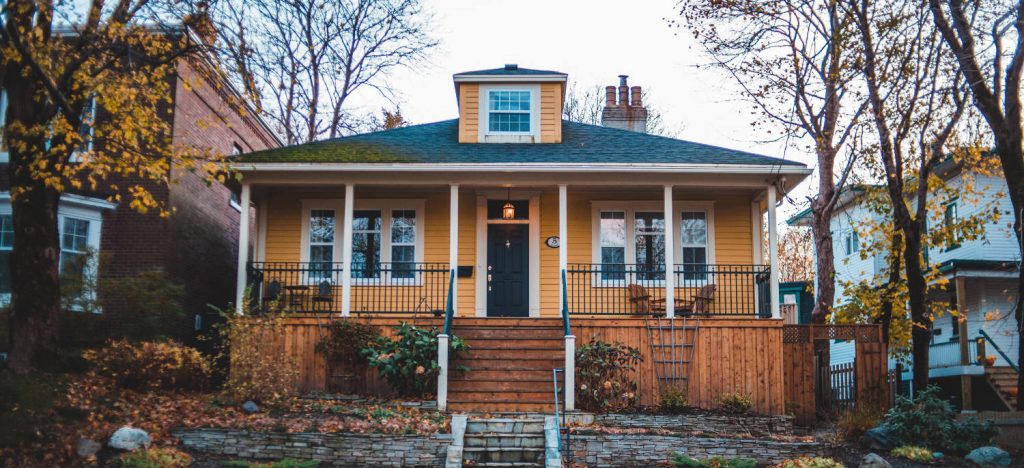
People often look to wholesaling because it can be a low-risk way to get started in real estate. The goal of wholesaling is to find a good property deal, write a contract to secure the deal, and then sell that contract to another buyer (usually a property flipper).
Unlike the other investment methods outlined in this article, you don’t actually take ownership of the property when wholesaling. Instead you take ownership of a contract which entitles you to purchase a property, and you then sell this contract on to an interested buyer.
Although there aren’t huge financial risks with wholesaling, there are some legal risks that you could run into. In some states wholesaling is outright illegal, while in others, it’s still a gray area that’s open to interpretation.
In addition to questions around the legality of wholesaling, another drawback is that the margins are quite tight, and the marketplace is competitive. So even after you’ve secured a property contract with this method, you can only add a limited amount of mark-up to the price that you offer to the final buyer.
Pros of wholesaling:
- You don’t need huge amounts of capital to start wholesaling
- It can be a good way to get started with real estate investing in general
- You can make money quickly
- It’s a repeatable process
Cons of wholesaling:
- You need to find and sell good deals, before anyone else cottons on to them. This is easier said than done.
- It’s very competitive
- It requires strong marketing skills to sell the properties quickly
- It’s not the most profitable real estate investing strategy. You are limited to a small percentage of the deal, and thus a small percentage of the profits.
- In some states, it is outright illegal
4. House Hacking
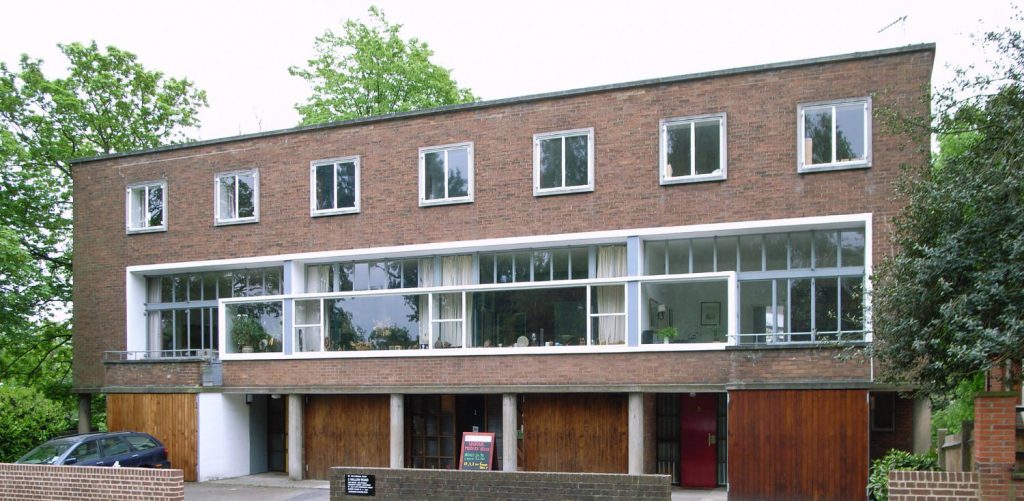
House Hacking is not nearly as unethical as the name might suggest. The objective is to purchase a multifamily apartment (duplex, triplex or fourplex), with the intention of living in one of the available units while paying as little as possible in rent. You then rent out the rest of the units, using the rental income to cover most if not all costs of owning the building.
In a perfect house hack, you can basically live in the house for free, or at a substantially reduced rental rate. While there may be some challenges involved in raising the capital to purchase the multi-unit property initially, once everything is set up successfully, it should reduce your financial burdens.
On this point, it is worth noting that Brandon Turner (from Bigger Pockets) and Chad Carson (Coach Carson) used house hacking to take their first steps in property investing. It’s fair to say that it worked out pretty well for both of them. They have both become multi-millionaire property investors.
Ultimately, if you are open to living with your tenants, House Hacking can be an excellent way to get started in real estate investing. It’s a financially responsible approach, and it will force you to become a competent landlord.
Pros of House Hacking:
- You can apply for an owner-occupied loan which should have better rates than a traditional investment property loan
- It’s a low-risk way to get started in real estate investing
- It can serve as a stepping stone to traditional investment properties
- It can be a very inexpensive way to live, while growing your wealth through real esate investing
Cons of House Hacking:
- You are required to live in the building (which might not be quite as luxurious as your normal place of residence)
- You have to live in close proximity to your tenants
- It requires a substantial financial investment. You are buying a property that can accommodate a number of tenants rather than a single-family house or apartment
- It intensifies your landlord responsibilities
5. Real Estate Investment Trusts (REITS)
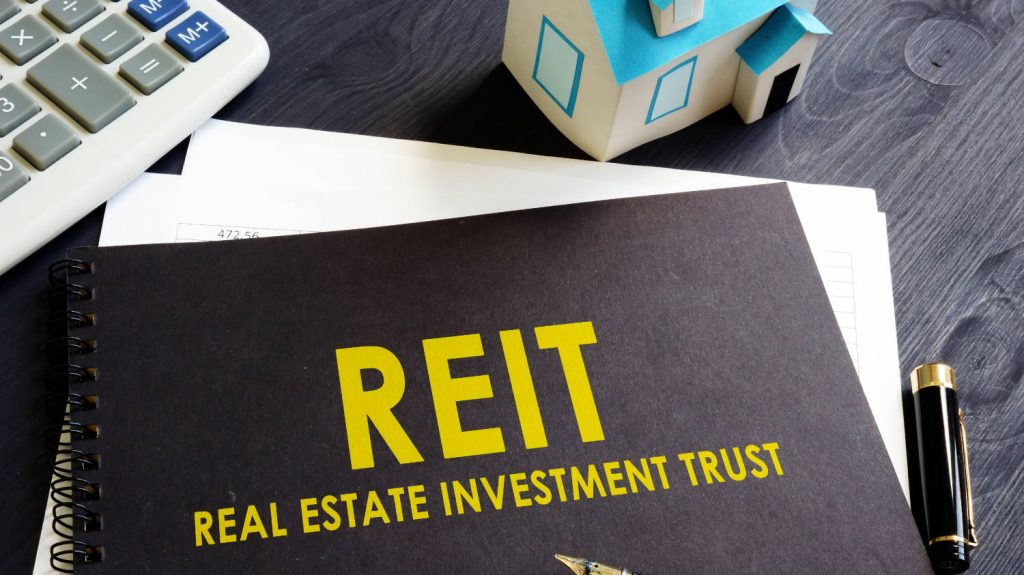
REIT stands for Real Estate Investment Trust. It is basically a collection of income-generating properties, managed by a particular company or investment group, that you can buy into via a brokerage account.
REITs are modeled after mutual funds, which pool together shares in different companies. The main difference is that REITs pool together properties rather than shares in companies.
While there are several different types of REITs, Public Listed REITs are the easiest to buy and the best for people just beginning their journey in real estate investment. In order to invest in REITs, you will need to open a brokerage account. You can find a list of suitable stock broking vendors here.
Pros of REITs:
- You can start with as little as $100
- It is a very passive investment strategy
- Consistent Dividend Pay-outs
- Diversified Risk
Cons of REITs:
- Lack of control – You are putting all your trust into the company that manages the REIT
- REITs are susceptible to overarching market conditions and can experience negative growth at times
- Limited ROI – REITs offer more modest returns than the other strategies outlined in this guide
6. BRRRR Property Investing
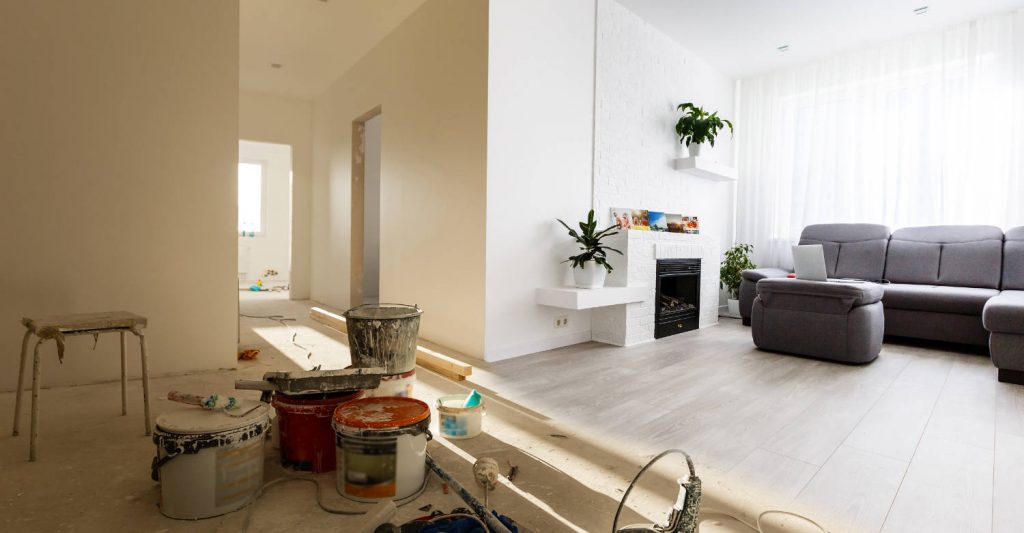
The BRRRR real estate strategy is similar to the fix and flip model, except the end goal, is to rent the property rather than to sell it. In other words, you aren’t looking for perfect properties. The underlying intention is to identify fixer-upper properties that have the potential to generate significantly more rental income after some decent repairs.
It is an acronym best displayed in bullet point form:
Buy
Rehab
Rent
Refinance
Repeat
Buy: Investors that know how to identify run-down properties have the most to gain from this strategy, while contracting experience can also be hugely beneficial (a good relationship with a reputable contractor is the next best option). Once
Rehab: Once the property has been purchased, the goal of the BRRRR investor is to transform the after-repair value of the property, in order to increase the gross rental income that it can generate. One bonus benefit of doing all the repairs before you start renting out the property is that your tenants are less likely to run into issues for the first couple of years. The property itself may not be brand new, but all the major weaknesses are likely to address during the rehab process.
Rent: As soon as the renovations are complete, you need to start looking for tenants. This is hugely important, because when you can confirm that the property is generating rental income, it will be easier for you to negotiate the refinance agreement with
Refinance: Typically, BRRRR investors will make use of a hard money loan to purchase the fixer-upper property initially. This is mainly because banks are less inclined to lend money to people hoping to purchase run-down properties.
There are 2 main drawbacks of hard money loans.
- The interest rates are invariably higher than traditional home loans
- The loan terms are usually 24 months or less
More importantly, at the end of the loan term, the expectation is that the property investor pays back the full amount owed to the hard money lender. With fix and flips, this isn’t an issue, because the investor will sell the property to a new buyer for significantly more than they initially paid for the house. This allows them to pay back the hard money lender, cover the costs of the rehab and make a healthy profit in the process.
With BRRRR investors, however, the investor needs to source a new mortgage (usually a rental property loan) to pay off the amount owed on the hard money loan. Importantly, the new loan should have a much longer-term (30 years) and a lower interest rate. By completing this step, the investor avoids the financial burden of paying for the property out of their own pocket, and it greatly improves the cash flow of the property.
Repeat: This step is pretty obvious, but once you’ve bought, renovated, rented and refinanced a property with this approach, the final step is to repeat the process, but with an entirely new property.
Provided your initial property is generating positive cash flow every month (it should be if you’ve run the numbers correctly), you should be in a stronger financial position then you were previously. Each new property then becomes part of an expanding portfolio.
Pros of BRRRR Investing:
It can be a recipe for early retirement: After completing a number of properties with this strategy, you can generate enough rental income to cover all your living expenses. This is the very recipe for early retirement.
Your portfolio of properties can generate huge amounts of equity: Over an extended period of time, most of the properties in your portfolio will appreciate in value. So Instead of just generating cash flow every month, your net worth will also increase steadily as the equity in each property grows.
Cons of BRRRR Investing:
Refinancing can be tricky: Assuming you make use of a hard money loan, you will be bound by a relatively short loan period. You need to complete the renovations and refinance the property before your initial hard money loan expires in order to avoid defaulting on the first loan.
There are risks involved when rehabbing a property: The renovations may be more expensive than you budgeted for, or they may take longer than planned. In addition, the property might not achieve the after-repair value that you set as a target. All of these scenarios can occur, and they increase the risks associated with the BRRRR method.
Strong Project Management Skills Are Required: The skills required for BRRRR property investing are almost identical to the skill required for property flipping. Both methods require exceptional attention to detail and strong project management skills.
Choosing The Right Strategy
We have outlined some of the most popular real estate investing strategies. While there are pros and cons to each method, the most important thing is to choose a strategy that compliments your existing skill set and financial status.
How to Overcome 3 of the Most Common Obstacles To Getting Started
Lack of Knowledge & Confidence:
These two go hand in hand for good reason. A lack of knowledge is often the root cause of a lack of confidence. Fortunately, there are numerous online resources that can teach you more than enough to fill whatever knowledge gaps you may currently have. In three to six months, you could acquire enough knowledge to successfully invest in real estate.
Even after you have acquired enough knowledge, a lack of confidence can prevent you from moving forward. Fears of market downturns, job security, or even just an overly anxious mind can all stop an aspirant property investor in their tracks.
- If you fall into this camp, the best thing may be to:
- Find a partner with more property investment experience
- Find a mentor that can guide you through the steps
- Use a reputable property investment company
- Start small with REITS, to get exposure to the real estate industry without too much capital
Lack of Money:
We’ve already dispelled the idea that you can invest in property without the means to actually pay back the loan. This could be a dealbreaker for some, because your credit score and your maximum loan amount (between 2 and 2.5 times your gross income) directly affect your ability to invest in real estate. If you are affected by this particular issue you could potentially:
- Build up significant savings over an extended period of time
- Upgrade your existing skill set to improve your career prospects
- Relocate to an area with better employment opportunities and higher salaries
- Start a small business that can generate additional income
- Find a partner or multiple partners in order to split the costs
- Join the gig economy and sell your skills on sites like Fiverr, Upwork and PeoplePerHour
Lack of Time:
For many people, real estate investment is likely to be a side hustle that may never become a full-time occupation. If you find yourself in this camp, time could well be the biggest obstacle to your success. Here are a few things that you can do to keep things on track.
- Teach and pay a virtual assistant to find potential investment properties on your behalf
- Wake up as early as possible and work on your real estate business before your day job begins
- Use real estate investment software to help find deals
- Dedicate your weekends to building your business rather than pursuing leisurely activities
Taking The Leap - Investing In Your First Property
While there are definitely other ways to build wealth, property investment is an achievable goal for many people, and it can form the foundation for a stable retirement. It is also known to be the single greatest producer of millionaires over the last two centuries.
If you are truly committed to investing in your first property, the next question should be how. How can you raise enough money for a sizable down payment? How can you earn enough money to service the monthly mortgage costs? How can you find the perfect run-down house for a fix and flip?
The question will ultimately lead to the answer if you pursue it vigilantly. If that answer requires a hard money loan, New Silver is here to help.

